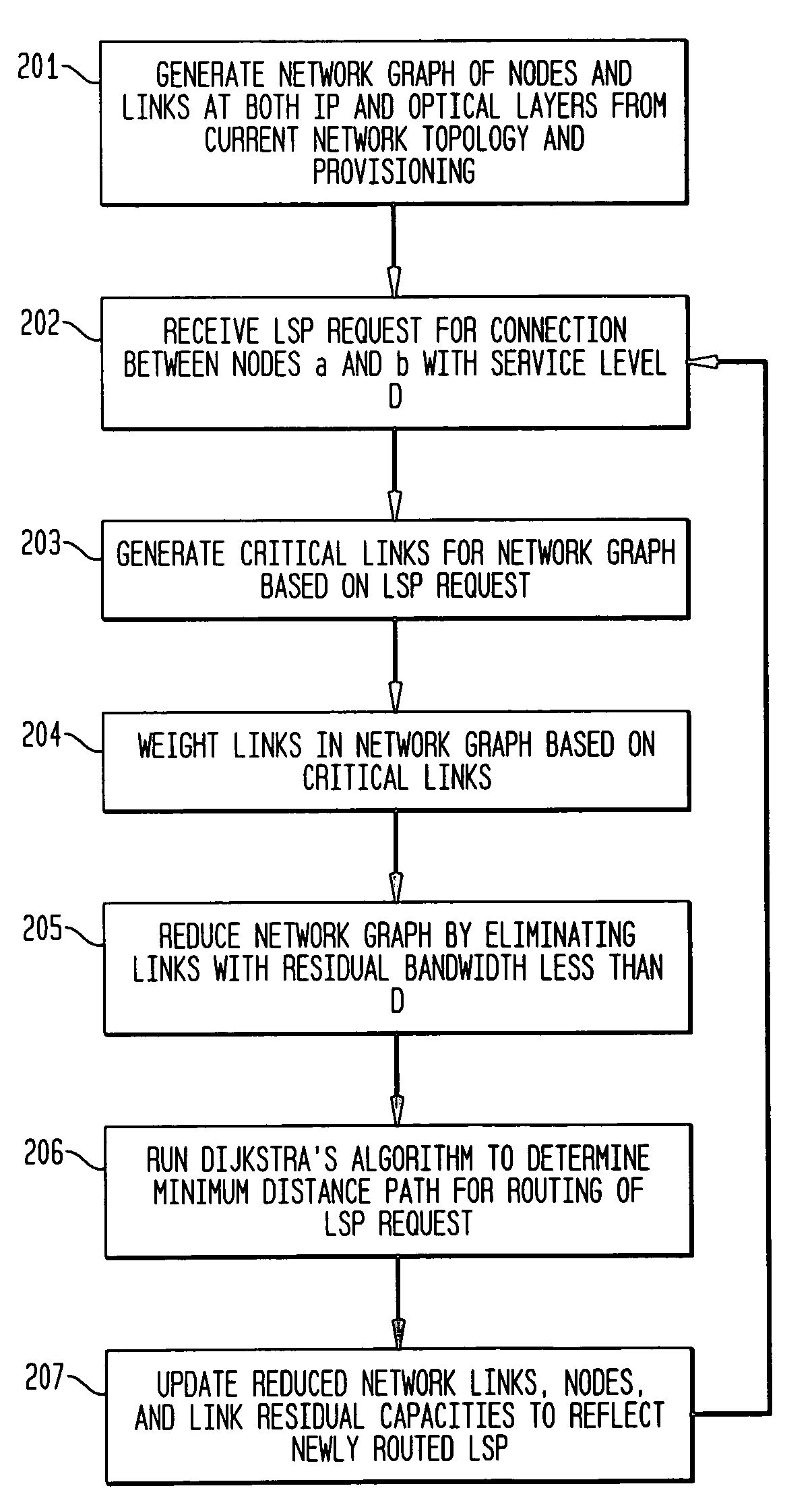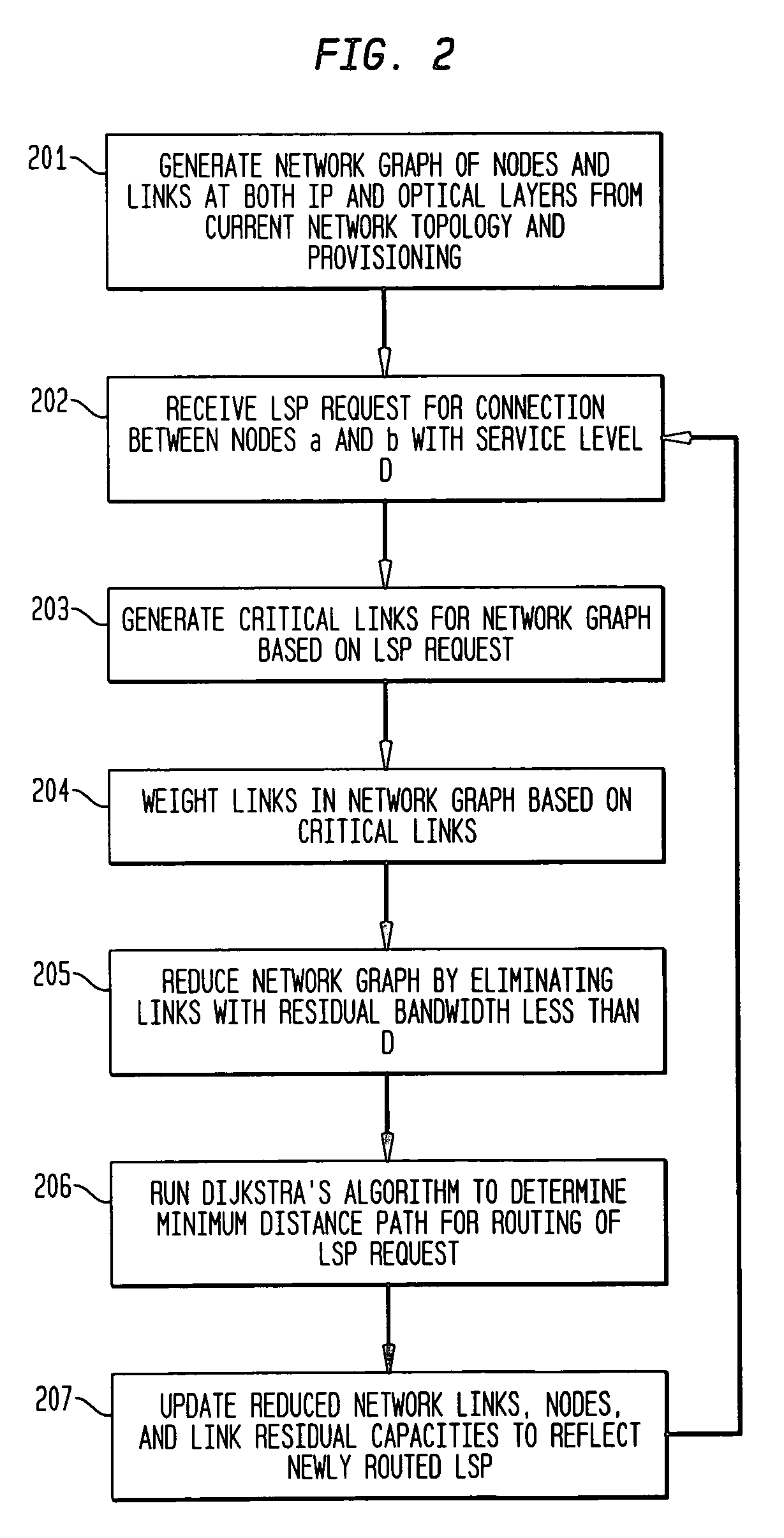Dynamic path routing with service level guarantees in optical networks
- Summary
- Abstract
- Description
- Claims
- Application Information
AI Technical Summary
Benefits of technology
Problems solved by technology
Method used
Image
Examples
Embodiment Construction
[0020]Embodiments of the present invention employ an integrated, dynamic routing (IDR) method for routing of bandwidth guaranteed network tunnel path (NTP) in optical networks. In accordance with embodiments of the present invention, IDR accounts for the combined knowledge of resource and topology information in both the packet and optical network layers. IDR employs modeling of network elements at both the IP and optical layer to generate a reduced network graph. Based on the demand of a request for the path, the reduced network graph is modified to account for interference to routing of the demand to future requests. A shortest path routing algorithm is then used to compute the path within the modified and reduced graph.
[0021]The exemplary embodiments herein describe IDR for routing IP layer label switched path (LSP) requests in multi-protocol label switched (MPLS) packet networks that are carried over wavelength division multiplex (WDM) optical networks. However, as would be appa...
PUM
 Login to View More
Login to View More Abstract
Description
Claims
Application Information
 Login to View More
Login to View More - R&D
- Intellectual Property
- Life Sciences
- Materials
- Tech Scout
- Unparalleled Data Quality
- Higher Quality Content
- 60% Fewer Hallucinations
Browse by: Latest US Patents, China's latest patents, Technical Efficacy Thesaurus, Application Domain, Technology Topic, Popular Technical Reports.
© 2025 PatSnap. All rights reserved.Legal|Privacy policy|Modern Slavery Act Transparency Statement|Sitemap|About US| Contact US: help@patsnap.com



